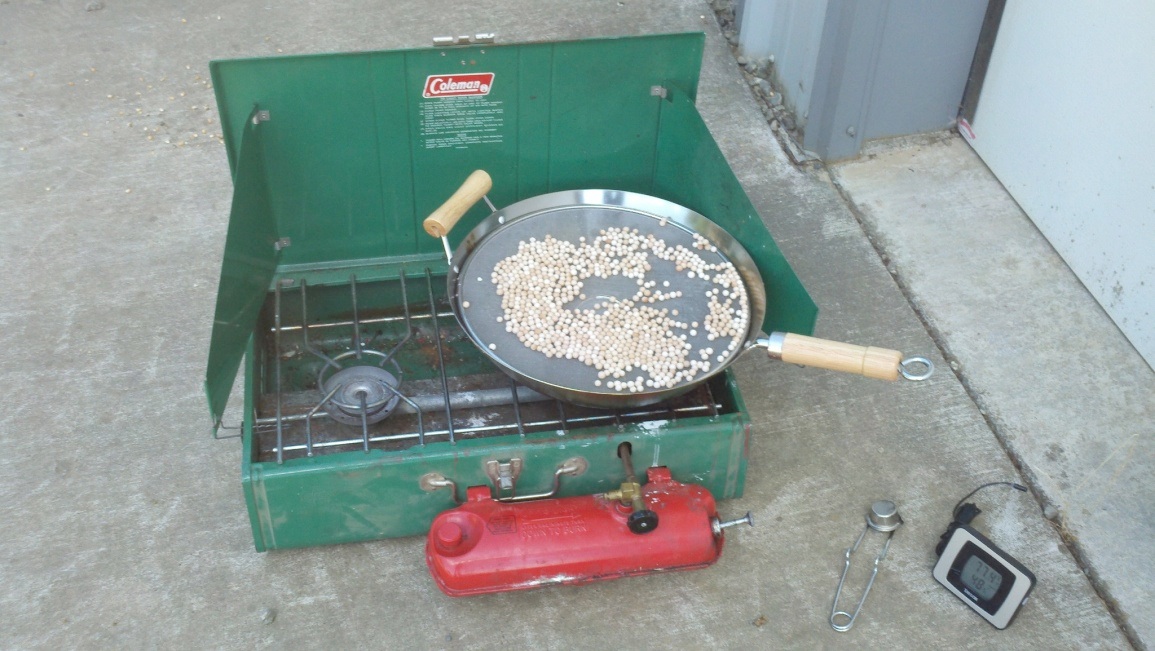About - Off Grid Zeolite Regeneration

Spring 2013
For this study, D‐Lab worked in connection with partners at the UC Davis United States Agency for International Development’s Horticulture Collaborative Research Support Program (USAID HortCRSP) office, Educational Concerns For Hunger Organization (ECHO) Asia, and Kasetsart University in Thailand. This study designed and prototyped offgrid technologies for recharging zeolite beads, a desiccant for horticultural seed saving, by two primary stakeholders in the Chiang Mai region of Northern Thailand: ECHO Asia’s seed bank in Mae Ai, and smallholder farmers in the Chiang Mai and Chiang Rai regions, the Palaung and Lahu hill tribes.
A feasibility study previously completed by D‐Lab students created the below conceptual problem tree (Figure 2) that illustrates the causes and impacts of farmer‐saved seed loss on regional biodiversity and cultural tradition. The feasibility study indicated that zeolite beads are a promising technology for seed saving, however factors of cost and the need for high‐temperature recharging of the beads may be barriers for use by off‐grid smallholder farmers. In response, this study focused on developing the most relevant and adaptable technology for off‐grid recharging by smallholder farmers in tropical climates.
About - Zeolite Seed Saving

Winter 2013
This report focuses on the use of zeolite for seed saving by two primary stakeholders in the Chiang Mai region of Northern Thailand: a seed bank in Mae Ai owned by the Educational Concerns For Hunger Organization’s (ECHO) Asia Regional Office, and smallholder farmers in Chiang Mai and Chiang Rai, the Palaung and Lahu hill tribes.
Currently, up to 45.6% of seeds in Northern Thailand hill tribe communities are lost to pests, fungi, and bacteria – threatening biodiversity and the cultural tradition of seed saving (Bates, Bicksler et al. 2011). To address concerns of biodiversity loss, we will assess the financial viability of an effective desiccant technology, zeolite beads, for drying and storage of indigenous seed for our partner organization, ECHO’s, seed bank in Mae Ai. As a possibility for strengthening cultural tradition, we will also assess the sociocultural and economic opportunities and barriers for zeolite adoption in hill tribe seed saving practices.
Based on our methodology, we set out to determine how cost, effectiveness, and qualitative factors compare among silica, zeolite, charcoal, sun drying, and oven drying. Our analysis of these areas revealed three significant findings. First, it is clear that zeolite is relatively cost‐comparable to similar technologies. Capital costs for zeolite are the highest of any drying technology. However, when these costs are levelized over two years, zeolite is not the most expensive drying technology; it is less than silica and only slightly more expensive than ovens. The reason for this is zeolite’s longevity. Silica must be recharged frequently, and becomes less and less effective after each recharge. After 4 to 5 recharges, it becomes ineffective. Subsequently, over a two‐year period silica must be replaced several times, thus bringing the overall cost of silica up. If silica costs approximately $10 per kg and must be replaced five times over two years (a conservative estimate) it will cost $50. Zeolite, though initially more expensive at $40 per kg, can be recharged indefinitely and 12 does not need to be replaced. Therefore, the levelized cost of zeolite is lower than that of silica. If the cost is levelized over additional years, zeolite will be even more cost‐effective compared to silica.
